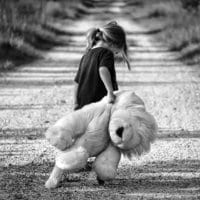 By Brenda Cannon Henley
By Brenda Cannon Henley
Living in the professional newspaper world for many years gives me access to many good pieces of information. I get press releases every day, and sometimes every hour, of my life from the big boys, UPI, AP, and others, as well as many from smaller agencies and reporting firms. I have long been a member of several respected news associations including the National and International Associations of Investigative Journalists. I have had courses and training in writing for the dead (obituaries and memorials), business writing, feature stories, personal profiles, inspirational material, and in depth reporting.
I appreciate the information, but there are times, it is very sad. This is one of those times. I have never seen so many reports as I have lately on the abuse of our children in so many ways. The statistics for crimes against children literally boggle my mind.
The US Department of Health and Human Services recently released these facts:
- One in every five girls and one in every 20 boys has been a victim of child sexual abuse.
- Self-report studies show that 20 percent of adult females and 5-10 percent of adult males recall a childhood a sexual assault or incident.
- During a one-year period in the US, 16 percent of youth ages 14 to 17 had been sexually assaulted.
- Over the course of their lifetime, 28 percent of US youth ages 14 to 17 had been sexually victimized.
- Children between the ages of 7 and 13 are most vulnerable to these sexual assaults.
- Three out of four adolescents that were victimized reported their attacker was someone they knew well.
- One of the saddest truths is that without intervention and help, these abused boys and girls will likely perpetuate the same category of crime against others.
Do these statistics shock us? Do they anger us? Do we get visibly upset? Are we willing to begin to think about what we could do to help? What can we do if we suspect sexual misbehavior? Is there someone we know hoping we care enough to help? Or, do we put a pretty smile on our faces and go about living our lives?
|
Whatever our roles are in a child’s life — parent, other family member, coach, teacher, religious leader, youth pastor, babysitter, neighbor — We have the power to make a positive, life-changing difference for that boy or girl.  Look for behavioral signs such as shrinking away from any physical contact, regressive behaviors such as thumb sucking, changing hygiene habits, such as refusing to bathe or overly bathing, age-inappropriate sexual behaviors, sleep pattern disturbances, or nightmares. Physical signs might be bruising, swelling near the genital area, blood on the sheets or undergarments, and broken bones. Verbal cues such as using words that are simply “too adult” for the age of the child, unexplained silences, or suddenly being less talkative and involved.
Look for behavioral signs such as shrinking away from any physical contact, regressive behaviors such as thumb sucking, changing hygiene habits, such as refusing to bathe or overly bathing, age-inappropriate sexual behaviors, sleep pattern disturbances, or nightmares. Physical signs might be bruising, swelling near the genital area, blood on the sheets or undergarments, and broken bones. Verbal cues such as using words that are simply “too adult” for the age of the child, unexplained silences, or suddenly being less talkative and involved.
Let’s be brave as adults. Report what we believe. Make sure the child has a chance in life. Call the proper authorities in our area even though it is an emotional decision and may be hard on us personally. Child Protective Services or the local police or sheriff’s department can be a starting point. Or, we can call the Childhelp National Abuse Hotline at 800-422-4453 for further directions.
|
Brenda Cannon Henley can be reached at (409) 781-8788, or
[email protected].
[7-16-2018]

 Posted in
Posted in 























